Brant: The Corpse of Pallas
Annotations
Trojans and other allies of Aeneas stand outside Troy around the bier of Pallas, in mourning (34-5). The man to the farthest left of the mourners may be Acoestes, charged with the task of guarding the youth's body before it can be transported back to Evander (33-4). Pallas lies on an elaborately embroidered bier, whereas in the text, a bier is made for him out of wicker, with a canopy of branches, in lines 64-6. He is laid out in his armor, which still has a giant gash showing the point on his chest where the spear of Mezentius killed him (40-1). Aeneas, who for some reason is shown on horseback, gives a short but moving eulogy (42-58) before preparing to send Pallas back to Evander for a proper burial.
Woodcut illustration from the “Strasbourg Vergil,” edited by Sebastian Brant: Publii Virgilii Maronis Opera cum quinque vulgatis commentariis expolitissimisque figuris atque imaginibus nuper per Sebastianum Brant superadditis (Strasbourg: Johannis Grieninger, 1502), fol. 370v, executed by an anonymous engraver under the direction of Brant.

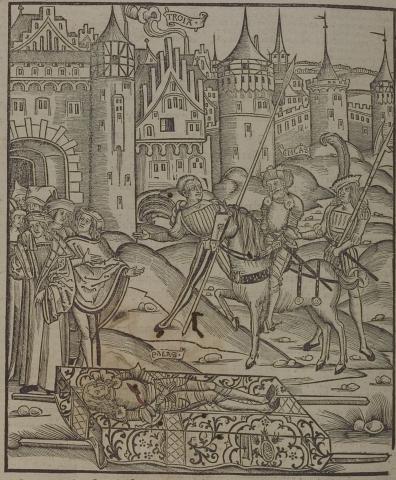
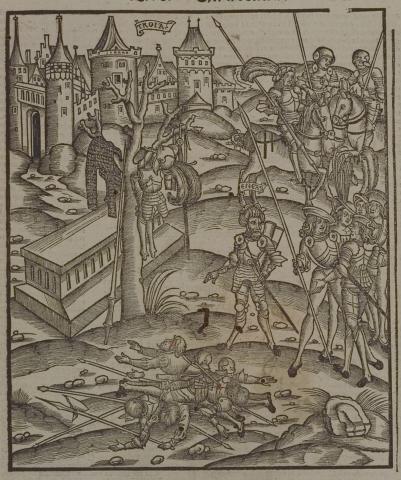
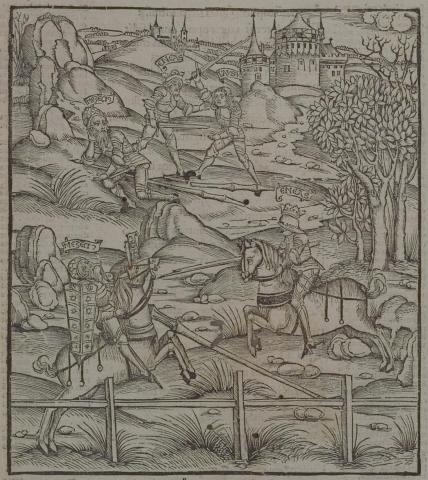

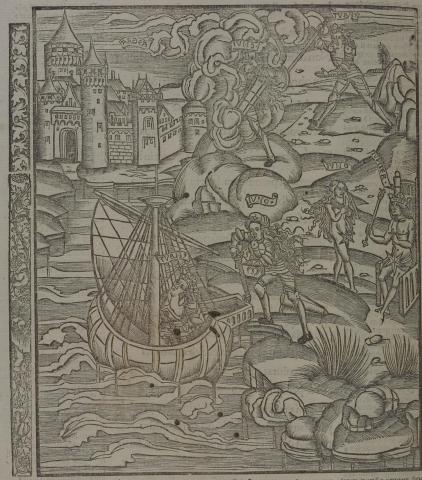
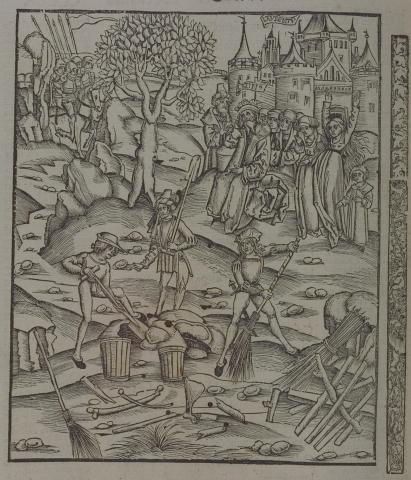
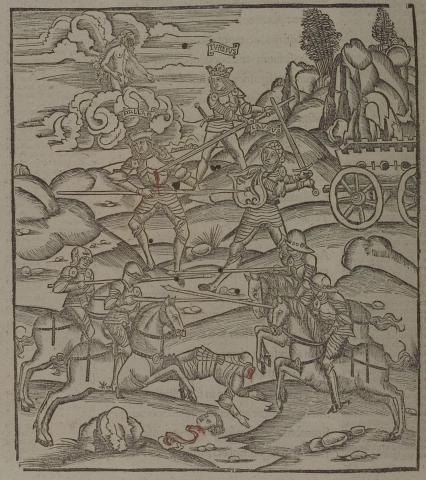
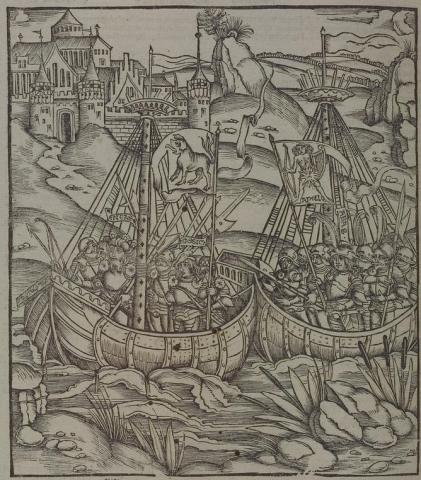
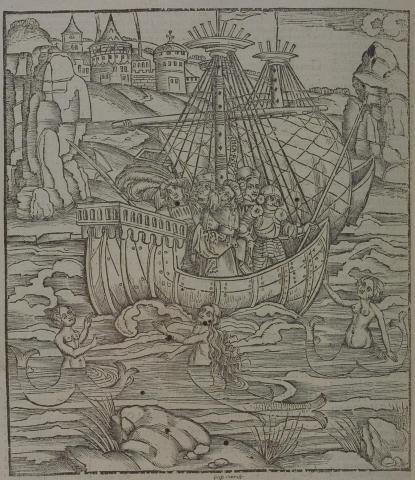
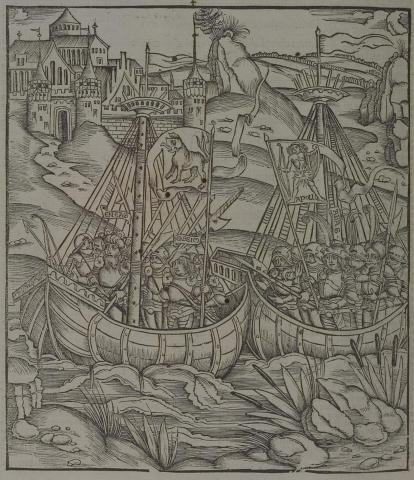
Sebastian Brant (1458-1521) was a humanist scholar of many competencies. Trained in classics and law at the University of Basel, Brant later lectured in jurisprudence there and practiced law in his native city of Strasbourg. While his satirical poem Das Narrenschiff won him considerable standing as a writer, his role in the transmission of Virgil to the Renaissance was at least as important. In 1502 he and Strasbourg printer Johannes Grüninger produced a major edition of Virgil’s works, along with Donatus’ Life and the commentaries of Servius, Landino, and Calderini, with more than two hundred woodcut illustrations. (Annabel Patterson)